Imagine discovering that one of America’s founding documents is tucked away right here in Metro Detroit. Visitors to The Henry Ford Museum in Dearborn often find themselves in awe, peering through display glass at a faded parchment bearing the date “July 4, 1776.” It’s essentially America’s birth certificate, the Declaration of Independence, and a rare original facsimile of it now resides in Michigan. Seeing the familiar flowing script and John Hancock’s oversized signature in person, many are surprised and delighted. How did this national treasure find its way to our backyard? The story involves early American history, a 19th-century engraver’s mission, and a bit of local mystery. In true Michigan fashion, it’s a tale of innovation, preservation, and community pride.
.png)
An American Treasure in Metro Detroit’s Backyard
It might come as a surprise that you don’t have to travel to Washington, D.C., or Philadelphia to see one of the Declaration of Independence’s cherished copies. The Henry Ford Museum of American Innovation in Dearborn, a beloved Metro Detroit institution visited by over 1.7 million people each year, is home to an authentic piece of our nation’s founding legacy. Fittingly, the museum’s grand brick façade is an exact replica of Independence Hall in Philadelphia, the very place where the Declaration was debated and adopted. Inside this historic-looking museum, among antique cars and Americana, you’ll find a rare 1823 engraved copy of the Declaration of Independence proudly on display.
Why is this particular copy so special? For starters, it’s one of only a few dozen official facsimiles of the Declaration ever made under government orders. Back in the 1820s, the U.S. State Department commissioned engraver William J. Stone to create a precise copy of the original Declaration, which by then had begun to fade. Stone produced 200 parchment copies of the Declaration in 1823, each meticulously reproducing the elegant handwriting and signatures of the 56 Founding Fathers. These copies were distributed to important figures and institutions of the early Republic. Fast forward to today, and only 31 of those original 200 prints have been located. Even more astonishing, just 23 are held in public collections, and one of them is at The Henry Ford Museum in Michigan.
In other words, Metro Detroit has something truly extraordinary: a bona fide piece of 18th-century American history that you can walk right up to and see with your own eyes. The Declaration copy at The Henry Ford isn’t a mere replica from a gift shop; it’s an official 19th-century artifact, sometimes called a “Stone copy,” produced to preserve the look of the original Declaration for posterity. Its presence here in Michigan’s most famous history museum makes our region an unlikely custodian of the American Revolution’s legacy, and it gives locals a chance to experience that history in an intimate way.
To understand how Henry Ford shaped Dearborn into a hub of American innovation and preservation, check out our post on the renovation of the historic Henry Ford Hotel
Preserving a Fading Document: The Story of the Stone Facsimile
To understand how a Detroit-area museum ended up with this treasure, it helps to know why these official copies of the Declaration were made in the first place. The original July 4, 1776 Declaration, the one signed in Philadelphia by members of the Continental Congress, was penned on parchment and, over the years, it suffered from light exposure and handling. By the 1810s, Americans’ patriotism was surging (especially after the War of 1812), and demand grew for reproductions of the nation’s founding document. Early entrepreneurs like John Binns and Benjamin Owen Tyler raced to publish decorative prints of the Declaration for sale, even squabbling publicly over who had the “true” version. Their feud and the fading condition of the original Declaration caught the government’s attention.
Enter John Quincy Adams – then Secretary of State (and later President) – who decided that the United States should create its own exact facsimile of the Declaration to preserve its text and famous signatures for future generations. In 1820, Adams commissioned 23-year-old engraver William J. Stone of Washington, D.C. to undertake this high-priority project. Stone’s task was daunting: he had to somehow copy every flourish and letter from the original parchment onto a new medium, capturing exactly how the Declaration looked in 1776. Historical records note that Stone labored for three years to finish the engraving. The technology of the time was primitive – long before photography or scanning – so no one knows the precise method Stone used. He may have traced the original by hand or even used a wet copying technique (pressing a damp sheet against the original to transfer some ink). Whichever method he chose, the result was spectacular: Stone produced a copperplate that, when inked and pressed onto parchment, yielded an incredibly faithful reproduction of the Declaration, down to the bold John Hancock signature and the delicate penmanship of “Life, Liberty and the pursuit of Happiness.”
In June 1823, Stone completed his engraving and delivered the plate to the State Department. The following year, Congress authorized 200 copies to be printed on parchment (treated animal skin) from Stone’s plate. These weren’t cheap posters; they were large, high-quality documents about 24 by 30 inches – essentially clones of the original. To mark them as official, Stone included an inscription at the top of each copy: “Engraved by W.I. STONE for the Dept. of State, by order of J.Q. Adams, Secy of State, July 4th 1823.” Anyone looking at a Stone facsimile can see this printed line and know it came from that first authorized edition. In fact, the Henry Ford Museum’s copy still bears this original 1823 imprint, a key detail proving it’s from the coveted first run and not a later reprint.
Congress decided these special copies should be spread far and wide across the young country. On May 26, 1824, Congress ordered the distribution of the Stone facsimiles to an array of VIPs and institutions. Each of the three surviving signers of the Declaration (Thomas Jefferson, John Adams, and Charles Carroll) received two copies as a gesture of honor. Several high offices – including President James Monroe, Vice President Daniel D. Tompkins, former President James Madison, and Revolutionary War hero Marquis de Lafayette – also got two copies each. Congress set aside 20 copies to be split between the House and Senate, and allotted copies to government departments (such as State, War, etc.), the Supreme Court, and the President’s House (White House). The remaining copies were then sent to governors, state legislatures, universities, and top libraries across the country. In theory, every region would have access to this “official” Declaration of Independence facsimile, so citizens could see with their own eyes the words and signatures that launched the nation.
Over time, many of Stone’s 200 prints disappeared or were damaged, but historians and collectors have tracked down 31 that survive today. Some turned up in library archives; a few are held by descendants of the original recipients. One even surfaced in recent years overseas, an additional parchment copy was found in a record office in Chichester, England, puzzling researchers as to how it ended up across the Atlantic. (That rare find, now dubbed the “Sussex Declaration,” sparked a whole new mystery about who took it to Britain and why.) Most surviving Stone copies, however, remain in America. You can find them at places like the Library of Congress, Independence Hall in Philadelphia, universities (Harvard, Yale, etc.), and historical societies. The Henry Ford Museum’s copy is the only Stone Declaration in Michigan, and one of very few located outside the East Coast. This makes it a real point of pride for the Midwest.
What does this 200-year-old facsimile actually look like? At a glance, it appears identical to the famous original: a broad sheet of parchment with flourishing calligraphy and the signatures of 56 patriots neatly arranged at the bottom. All the iconic elements are there – the sweeping title “In Congress, July 4, 1776,” the solemn preamble about truths being self-evident, and that dramatic John Hancock autograph centered below. Because it was made only 47 years after the Declaration was first signed, Stone’s engraving captured the text before further fading or damage could occur. In fact, many history textbooks and reproductions have relied on Stone’s clear version over the years. Visitors often comment on the artistry of the handwriting, those loops and curves from the quill pens of 1776. On the Henry Ford’s copy, those details are amazingly sharp. It’s a powerful experience to read the words “Life, Liberty and the pursuit of Happiness” on a parchment that looks just as the original might have looked in the early 1800s.
The Henry Ford’s copy has one more mark of authenticity: in the upper left corner, you can spot the faint line where Stone inscribed his name and the 1823 date. Later, when Stone made additional prints in the 1830s, he removed that top inscription and added a smaller one at the bottom, and those later prints were on ordinary paper. But the museum’s copy is printed on thick parchment, and includes the original imprint line, confirming it’s from the coveted 1823 batch. In short, it’s the real deal, as real as a copy can get without being the 1776 original.
.png) Detroit Free Press, Facebook
Detroit Free Press, Facebook
From Philadelphia to Dearborn: Michigan’s Unexpected Heirloom
Knowing that one of these rare Declaration copies was sent out in the 1820s, the next question is: how on earth did it end up in Dearborn, Michigan, of all places? The answer lies in the early 20th century and the vision of one very famous Michigander: Henry Ford. Ford, the automotive pioneer, was also a passionate collector of American historical items. In the 1920s, he established what was then called the Edison Institute (now The Henry Ford Museum and Greenfield Village) to showcase artifacts of American innovation and liberty. When the museum was being dedicated in October 1929, Henry Ford wanted it to be a shrine to American history, so much so that, as mentioned, he built its exterior to mirror Independence Hall.
Around that very time, a remarkable gift arrived. In late October 1929, Dr. Michael Seip, a physician from Easton, Pennsylvania, donated the Declaration of Independence facsimile to Henry Ford’s new museum. Museum records list it simply as the “Gift of Dr. M. S. Seip”, and it was accessioned in 1929. Why Dr. Seip decided to part with this treasure is not fully documented, which adds a bit of mystery to the story. We do know that the timing coincided with a major celebration: on October 21, 1929, Henry Ford hosted Light’s Golden Jubilee in Dearborn, a 50th anniversary party for Thomas Edison’s light bulb that doubled as the grand opening of the museum complex. Dignitaries like President Herbert Hoover and Edison himself were in attendance for that event. It’s speculated that Dr. Seip (or someone on his behalf) might have been inspired by this patriotic gathering to contribute the historic Declaration copy to Ford’s museum. It was a time of looking back proudly at American ingenuity and the nation’s origins, so the donation was certainly symbolic.
Dr. Seip’s own reasons remain a bit elusive. He hailed from Easton, PA, notably one of the first towns where the Declaration of Independence was read aloud to the public on July 8, 1776. In fact, Easton has a rich Revolutionary War heritage. Dr. Seip’s family ran an inn and tavern in Easton that dated back to the 1760s, a place that very likely bustled with news of independence during the Revolution. It’s tempting to wonder if the Seip family had possessed the Stone copy for generations, perhaps handed down or acquired due to their town’s historical connection. However, the engravings were not individually numbered or tracked by the government, so it’s hard to trace each copy’s journey. By the 1920s, some copies had shown up in estate sales or among collectors of Americana, so Dr. Seip could have obtained one through those means as well.
The Henry Ford Museum staff themselves are a bit in the dark on the full provenance. As the museum’s current Director of Heritage Communications has noted, “there are all sorts of open questions” about how exactly Dr. Seip got the document and why he chose to give it to Henry Ford. This kind of mystery is actually part of the fun of history; even nearly 200 years after it was printed, this Declaration facsimile carries secrets waiting to be uncovered. The museum has expressed interest in doing more research, possibly digging into Dr. Seip’s history or checking archives in Easton for clues. Was it a token of gratitude? A quid pro quo for something? Or simply a generous act by a history buff to ensure the document would be preserved and displayed for the public? We might learn more with time, but for now, Michigan’s copy of the Declaration retains an aura of intrigue about its journey.
What we do know is that Henry Ford graciously accepted the gift, and it became part of his fast-growing collection of national treasures. It’s poetic, in a way: an engraved echo of the Declaration found a permanent home in a museum whose very mission is to preserve American history for educational purposes. Ford famously said he was “collecting the history of our people as written into things their hands made and used,” and indeed this facsimile was made by early Americans to capture the spirit of 1776. Perhaps Henry Ford saw it as a perfect centerpiece for the museum’s Revolutionary War exhibits. After all, he literally built a museum wing that looks like the building where the Declaration was signed, how fitting to have the document (or at least a genuine copy) inside it!
A Living Piece of History on Display in Dearborn
Today, the Declaration of Independence copy is one of the highlights of With Liberty and Justice for All, an exhibit at The Henry Ford Museum that explores America’s ongoing quest for freedom and equality. In this gallery, the Declaration facsimile anchors the section on the Revolutionary era, reminding visitors of the lofty ideals that launched the United States. It’s surrounded by other artifacts that chronicle the nation’s struggles and progress, from the Colonial period through the Civil War to the Civil Rights movement. (In the same exhibit, for example, you can see the camp bed used by George Washington and the Rosa Parks bus, where one brave woman struck a blow against segregation, powerful bookends to the American story.)
Seeing the Declaration’s script up close in Michigan has a way of sparking conversations among museum-goers. Families often gather around the display, parents explaining to kids that this document announced our independence from British rule nearly two and a half centuries ago. The words on this parchment literally changed the world, and here they are, inches away behind protective glass. Many visitors find it humbling, and some have even described it as seeing the nation’s “birth certificate.” Unlike reading it in a textbook, standing in front of the real thing makes the history feel tangible and real. Grandparents point out the famous signatures (“Look, there’s John Hancock, he really did sign it that big!”) and youngsters ask curious questions (“Is that the real one? Why is the paper so brown?”). It’s not uncommon to overhear a child ask a grandfather if he happened to know any of the Founding Fathers, to which there’s laughter and an explanation that no, even Grandpa isn’t that old! These intergenerational moments are exactly what The Henry Ford aims to inspire.
What’s also intriguing is how the Declaration’s content can still prompt reflection and debate, even in a museum setting. The document boldly proclaims “all men are created equal”, yet we know the America of 1776 fell short of that promise. The exhibit doesn’t shy away from that complexity. It notes that Jefferson’s original draft had condemned the slave trade, but that passage was removed to appease certain colonies. And the Declaration pointed accusingly at King George for inciting “merciless Indian savages” on the frontier, a phrase that reminds us the colonists did not extend their vision of liberty to Indigenous peoples. So while the Declaration is a beacon of liberty, it also reflects the contradictions of its time. Seeing it on display, visitors are encouraged to think about those contradictions: Who was left out of “all men are created equal” in 1776? How has our definition of equality expanded since? The exhibit invites a dialogue between the past and present, making the Declaration not just a historic artifact, but a living document that we continue to interpret and challenge.
For Michiganders, there’s a special pride in having this artifact here because it connects our community to the broader American journey. We’re hundreds of miles from Independence Hall, yet you can stand in Dearborn and gaze upon the same founding words. It’s a reminder that the ideals of the American Revolution belong to every state, every city, and every citizen, not just the East Coast. The Henry Ford Museum has effectively brought a piece of Philadelphia’s 18th-century heritage to the Midwest, integrating it into our local story. School groups from Detroit, families from the suburbs, and tourists from across the region all get a chance to be inspired by the Declaration without leaving Michigan. Especially as the United States approaches its 250th anniversary in 2026, having this document on display here feels timely and significant. It gives Metro Detroit a direct connection to the national celebration of our country’s founding. You can bet that when the semiquincentennial events roll around, The Henry Ford’s Declaration copy will be center stage in Michigan’s commemorations, helping all of us reflect on 250 years of nation-building.
Inspired to explore more hidden gems and historical spots across Michigan? Don’t miss our guide to the best weekend road trips from Detroit.
.png) The Henry Ford, Facebook
The Henry Ford, Facebook
Bringing History Home: Why It Matters and How to Experience It
The journey of this rare Declaration of Independence copy, from an official printing in 1823, to a Pennsylvania doctor’s possession, to Henry Ford’s museum, is a story that resonates beyond just historical trivia. It’s about making national history accessible at the local level. For a top-tier museum in Metro Detroit to care for this document shows the commitment our community has to education and heritage. It means that a family outing in Dearborn can turn into a brush with the Revolutionary era. It means that kids in Michigan can feel a direct link to the Founding Fathers’ world without hopping on a plane to D.C. or Philly. In a broader sense, it exemplifies how history isn’t confined to where it originally happened; its lessons and legacy can travel and take root anywhere.
So, why should this matter to you? Because it’s pretty incredible that we have a tangible piece of American independence right here in our neighborhood. It’s one thing to watch fireworks on the Fourth of July; it’s another to stand inches from the very words that started it all. The next time you’re looking for an enriching weekend activity or a teaching moment for your kids, consider visiting The Henry Ford Museum to see this Declaration of Independence copy. Spend a moment in front of it. Really look at the signatures and the antiquated “long S” style of writing. Imagine the journey of those words from 1776 to today. It’s a chance to feel connected to the courage and vision of the people who founded our nation, and also to appreciate how far we’ve come (and how we continue to strive to “form a more perfect Union,” as another document says).
Seeing the Declaration up close might even inspire you. It might spark a conversation about what “liberty and justice for all” means in each generation, a conversation that’s very much alive today. After all, history isn’t just in books; it’s around us and within us, influencing how we view our community and country. As a lifelong Michigander and local expert, I find that treasures like this make me even more proud of our area. They show that Metro Detroit isn’t just about cars and Motown (wonderful as those are), but also a guardian of American ideals and stories.
While you’re in town, don’t miss the chance to grab a bite of Detroit culture—here are 15 iconic dishes you’ve got to try.
Ready to experience this slice of history for yourself? Plan a trip to The Henry Ford Museum in Dearborn and seek out the Declaration of Independence in the exhibits. Stand before it and take a moment to let it sink in. It’s not every day you get to literally read over the shoulders of the Founding Fathers! And if you’re ever curious for more local insights, whether it’s historical gems, community highlights, or even advice on settling down in the Metro Detroit area, feel free to reach out. There’s so much to discover and share about our corner of Michigan. Just like this rare document found a home here, you might be surprised what other wonders are hiding in plain sight in our community. In the meantime, don’t miss the opportunity to witness a piece of America’s past, alive and well in Michigan; it’s an experience that’s truly worth it.
DON'T KEEP US A SECRET - SHARE WITH A FRIEND OR ON SOCIAL MEDIA!
THINKING OF MOVING TO Dearborn, OR LOOKING TO RELOCATE IN THE AREA? VIEW A LIST OF CURRENT HOMES FOR SALE BELOW.
Dearborn IDX
The Perna Team and Michael Perna are the best real estate agents in Dearborn and Ann Arbor. The Perna Team and Michael Perna have been hired as a real estate agent by hundreds of home owners to sell their homes in Dearborn and Ann Arbor.
Posted by Michael Perna on
.11.png)






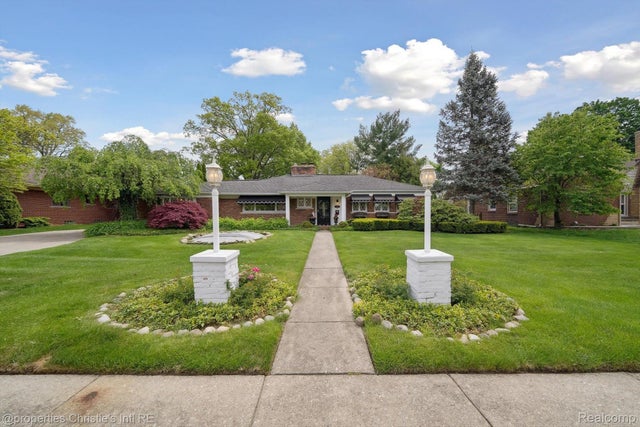
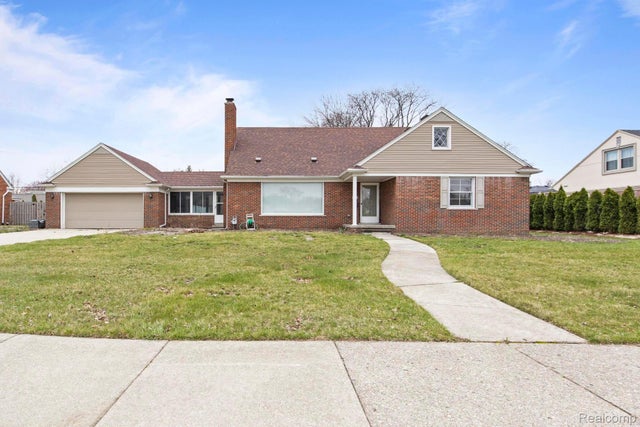

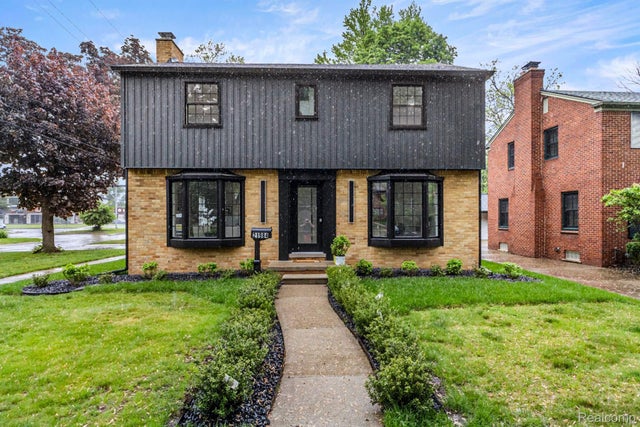








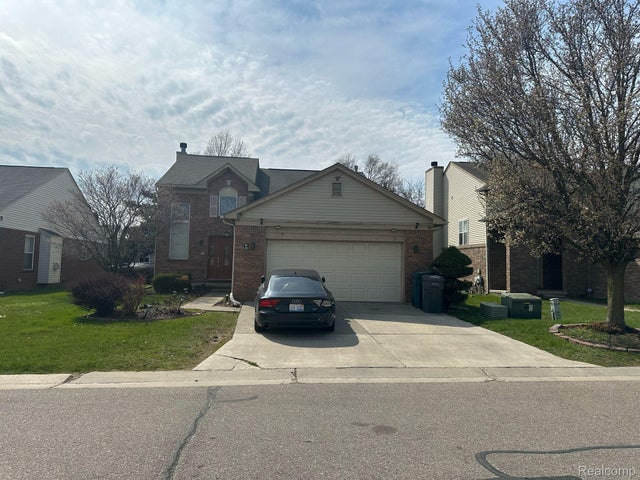





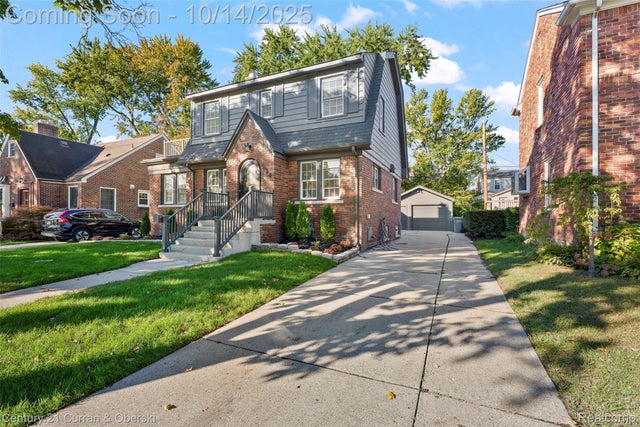

























Leave A Comment